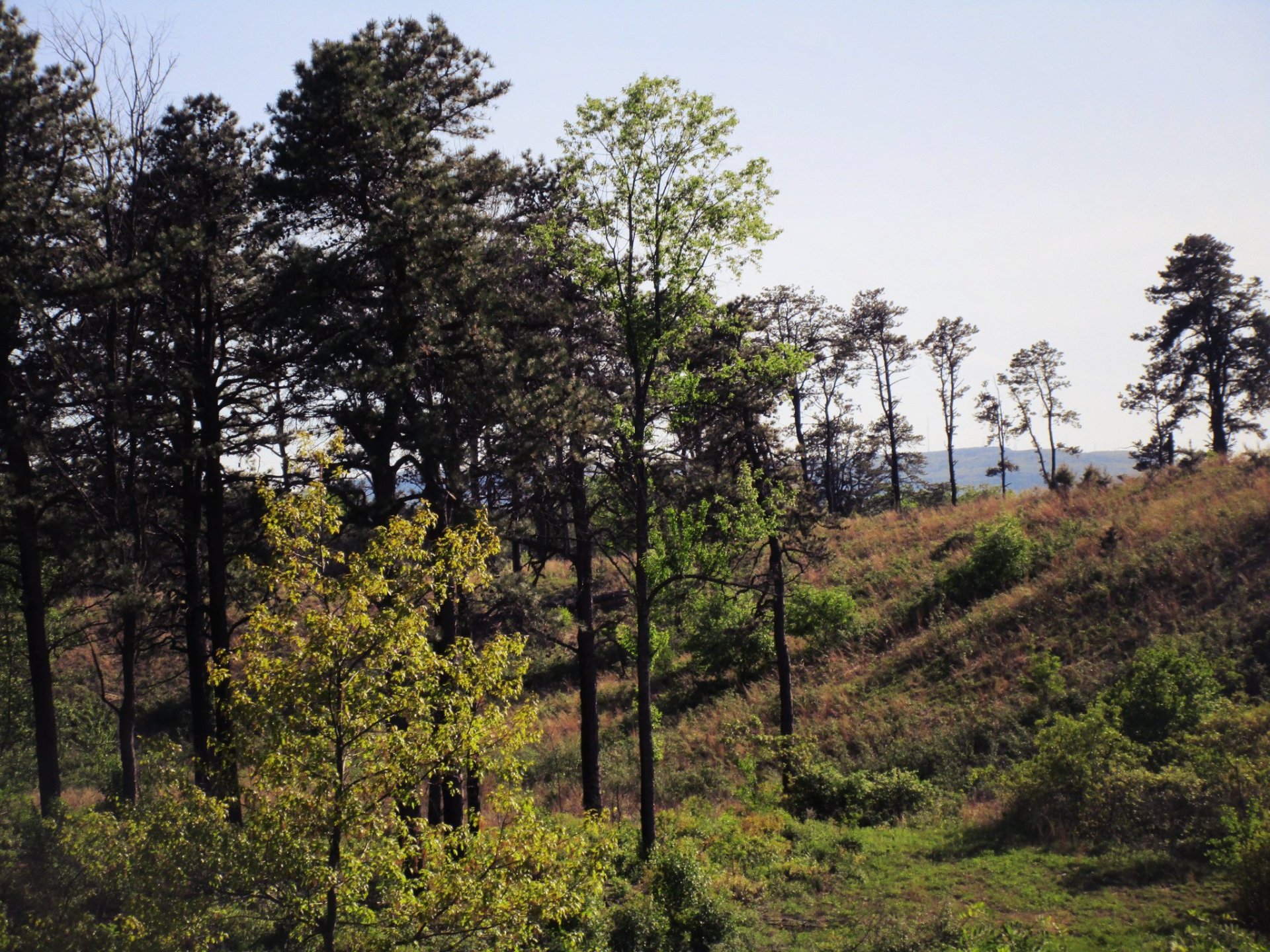ALBANY, NY: Retired National Weather Service (NWS) meteorologist Hugh “Woody” Johnson spoke at the November 20 Save the Pine Bush dinner about “How Trump could ruin our national Weather Service and trump our chances to reverse climate change for good.”
Using a multi-page Power Point, Hugh quickly covered a considerable amount of material, and, when finished with his presentation, asked listeners what can we do about climate change. Many comments were offered. Bert S. said, “Don’t spend money.” Wendy D. said turn the heat way down indoors and sleep in a hat with long underwear. Chris K. said go to second-hand stores for clothes. Tom E. (me) said stop flying. A man said install more solar and wind, but not everywhere, and said we must move fast. Wendy D. said compost foods and don’t put it in the “garbage.” Lou S. urged compost human wastes and use composting toilets. Lynne J. said put solar panels on all the flat roofs in Albany which would also put many people to work. John W. said to track down and read a November 9 US Rep. Paul Tonko email that said it may be too late to control or limit climate change. Hugh J. insisted we must try, that it can be done. John said we must admit how far we have gone, and how bad it is. Bert urged that we drive less in the Hudson Valley, but this is hard to do for many due to the nature of continuing development in places without mass transit. Andy A. urged that we update infrastructure to make it more resilient.
Hugh began his presentation saying he worked for the NWS from 1990-2015, the final twenty years in the Albany office. He defined weather as the hourly/daily change of temperature-pressure-wind-precipitation and other issues; climate is longer term weather measured up to thirty or more years. Many natural changes occur in climate due to sunspots, volcanic eruptions, and ocean currents. Displaying an 1880-2019 graph, he said the average Earth temperature is about 57 degrees Fahrenheit, with the coolest of those years all occurring before 1980, most before 1940, and the last forty years all above the 1901-2000 average. The past five years have been the warmest yet.
In the middle of the 20th century, far more cold weather records were set in Albany than warm weather records, but since 1990, the opposite is true. He said 2017 was the first time we hit 70F in Albany in February; it occurred again the following year. The first freeze was on November 2, the latest since 1931. Albany had 44 consecutive days with 80F or higher in summer 2018. Annual precipitation is also increased with 2000-2009 the wettest decade on record.
Another graph showed carbon dioxide (CO2) atmospheric concentrations are higher now (413 parts per million (PPM)) than any time during the past 400,000 years CO2 concentrations have steadily increased from under 320 ppm in 1960 to almost 100 more now. Hugh said the Intergovernmental Panel on Climate Change (IPCC) believes that a CO2 concentration of 1200 ppm would increase average Earth temperatures by 8C and lead to the extinction of humans. Before that occurs, Arctic ice would disappear, methane releases would soar, and famines and heat waves would be far more common and severe. At present, we are experiencing more aggressive wildfires, extinctions of birds, declining bee populations, the geographic spread of mosquitoes,more flooding and natural disasters, and sea levels rising faster than before.
He said the goal of the national Weather Service is to protect life and property through accurate and timely forecasts and warnings, provide accurate forecasts that enhance the economy, and notify people to action. Hugh said the NWS is a division of the National Oceanic and Atmospheric Administration (NOAA), which is a part of the US Department of Commerce. He said Wilbur L. Ross heads the Commerce department, Barry Lee Meyers has been nominated by President Trump to head NOAA, and Dr. Louis Uccellini directs NWS.
Hugh briefly explained the controversy Mr. Trump got into last summer when he falsified a weather forecast using a Sharpe on a four-day old chart to say Alabama was threatened by Hurricane Dorian. Among the problems Hugh sees with Trump overseeing the national government are his refusal to grasp the severity of current climate realities, a lack of communication, and a potential degradation of services provided by NOAA and NWS.
Among the ways to combat climate change Hugh identified are renewable energy and more efficient farming. he sees the Climate Leadership and Community Act enacted last year in New York as a step in the right direction. Hugh predicted a colder and wetter winter locally than what used to be normal weather. However so far, a persistent ridge in the west has yet to develop while one has popped up in the southeast like last year. Therefore temperatures have been running milder than normal and precipitation near normal.
Additional note: Shortly after Hugh’s talk, Barry Meyer removed himself from consideration due to an illness. In the interim, Neil Jacobs is the acting director now for the NOAA Agency.
Published in February/March 2020
Save the Pine Bush Newsletter
